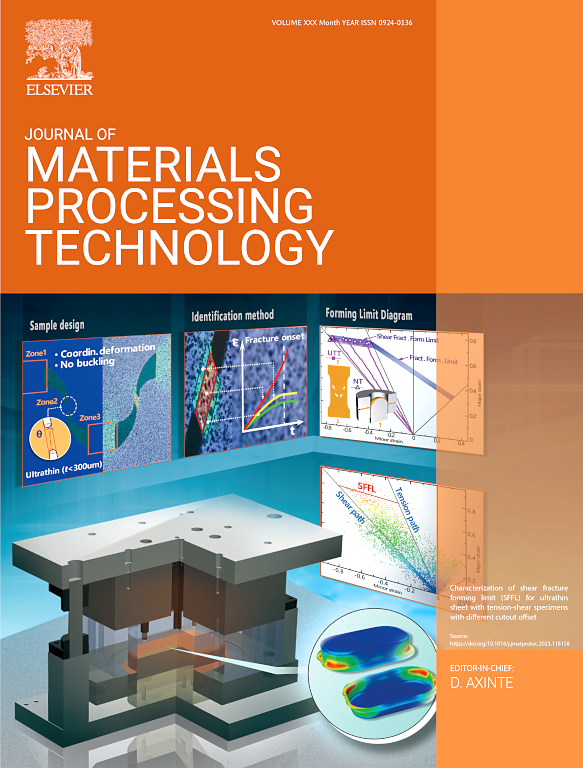The influence of deformation-dependent prior chip boundary on microstructure and tensile properties in a solid-state recycled AA6063 aluminum alloy
IF 6.7
2区 材料科学
Q1 ENGINEERING, INDUSTRIAL
Journal of Materials Processing Technology
Pub Date : 2025-02-01
DOI:10.1016/j.jmatprotec.2024.118693
引用次数: 0
Abstract
Solid-state recycling that is devoid of metal melting process represents an energy-effective, environment-friendly and materials-saving way in producing sustainable aluminum (Al) materials from its scraps, and thereby is a promising solution in recycling of Al-based chips. On the recycling of Al-based chips by solid-state route, however, one major concern comes from the presence of prior chip boundaries which are expected to negatively influence the mechanical properties of recycled materials. In the current study, we examined prior chip boundaries in a solid-state recycled AA6063 Al alloy fabricated by extrusion of its machining chips, and found that samples taken from the edge and central regions of the extruded, artificially-aged rod exhibit drastically different oxide-decorated prior chip boundaries. The observed variations in oxide-decorated prior chip boundaries between the two locations are intimately linked to the shear strain encountered during the extrusion process. Adjacent to the edge region, a higher shear strain facilitates the fine dispersion of smaller oxides along the prior chip boundaries that are aligned with the extrusion direction. Conversely, in the central region, a reduced shear strain results in the coarse distribution of larger oxides fragments within the prior chip boundaries. As a result, the samples derived from the edge and central regions display essentially different grain structures, strain hardening effects, and fracture behaviors. Our results demonstrate deformation-controlled oxide-decorated prior chip boundaries in chip-based Al alloys, and their principal influence on recycled materials’ microstructures and tensile properties.
求助全文
约1分钟内获得全文
求助全文
来源期刊

Journal of Materials Processing Technology
工程技术-材料科学:综合
CiteScore
12.60
自引率
4.80%
发文量
403
审稿时长
29 days
期刊介绍:
The Journal of Materials Processing Technology covers the processing techniques used in manufacturing components from metals and other materials. The journal aims to publish full research papers of original, significant and rigorous work and so to contribute to increased production efficiency and improved component performance.
Areas of interest to the journal include:
• Casting, forming and machining
• Additive processing and joining technologies
• The evolution of material properties under the specific conditions met in manufacturing processes
• Surface engineering when it relates specifically to a manufacturing process
• Design and behavior of equipment and tools.
 求助内容:
求助内容: 应助结果提醒方式:
应助结果提醒方式:


